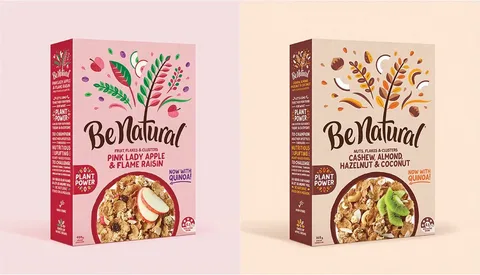
Cereal boxes come in various sizes, each catering to different consumer needs. Whether you’re looking for a quick breakfast on the go or a family-sized pack for long-term use, understanding cereal box dimensions is essential. In this article, we will compare mini cereal box dimensions with regular size cereal boxes, exploring their advantages, uses, and industry standards.
Understanding Cereal Box Dimensions
Cereal boxes are designed to store and protect cereal while providing branding space for companies. The dimensions of these boxes vary based on the serving size and market demand. Manufacturers follow standard cereal box dimensions to ensure consistency across brands and products.
What Are the Standard Cereal Box Dimensions?
The standard cereal box size varies slightly between brands, but most regular cereal boxes measure approximately 12 inches in height, 8 inches in width, and 2 inches in depth. This size is commonly found in supermarkets and is ideal for families or individuals who consume cereal regularly.
For those looking for more substantial options, family-size cereal box dimensions are generally larger, measuring around 14 inches in height, 10 inches in width, and 3 inches in depth. These boxes contain more servings, making them cost-effective for larger households.
Mini Cereal Box Dimensions
Mini cereal boxes are significantly smaller, designed for single servings. Their dimensions usually range between 4 inches in height, 3 inches in width, and 1.5 inches in depth. These boxes are commonly used for travel, hotels, and portion-controlled breakfasts. They are also popular in variety packs, allowing consumers to enjoy multiple flavors without committing to a full-size box.
Mini vs. Regular Size: Key Differences
1. Portion Size
- Mini cereal boxes contain a single serving, typically ranging from 0.5 to 1.5 ounces of cereal.
- Regular cereal boxes hold multiple servings, generally between 12 and 20 ounces, depending on the brand.
2. Storage Convenience
- Mini boxes are compact and easy to store, making them great for small kitchens, travel, or lunch boxes.
- Regular cereal boxes require more storage space but provide better value for frequent cereal eaters.
3. Price and Cost-Effectiveness
- Per ounce, mini cereal boxes are often more expensive due to packaging costs and convenience.
- Regular size cereal boxes are more cost-efficient, offering larger quantities for a lower price per serving.
4. Eco-Friendliness
- Mini boxes generate more packaging boxes waste per serving compared to larger boxes.
- Regular cereal boxes use fewer materials in proportion to their content, making them a more sustainable choice.
Choosing the Right Cereal Box Size
When selecting a cereal box, consider your consumption habits. If you prefer variety and convenience, mini cereal box dimensions may suit you best. However, if you consume cereal regularly, opting for a standard cereal box size or a family-size cereal box may be a better choice.
For those concerned about space, measuring the cereal box dimensions in inches can help determine the best fit for your pantry. Understanding the size of a cereal box also helps in estimating storage requirements and making bulk purchases wisely.
Conclusion
Both mini cereal boxes and regular-size cereal boxes have their unique benefits. Whether you need a quick, single-serve option or a cost-effective bulk package, knowing the cereal box dimensions can help you make an informed decision. From the standard cereal box dimensions to the family-size cereal box dimensions, each type serves a different purpose in households and businesses. By comparing these sizes, consumers can select the most practical option for their needs.





